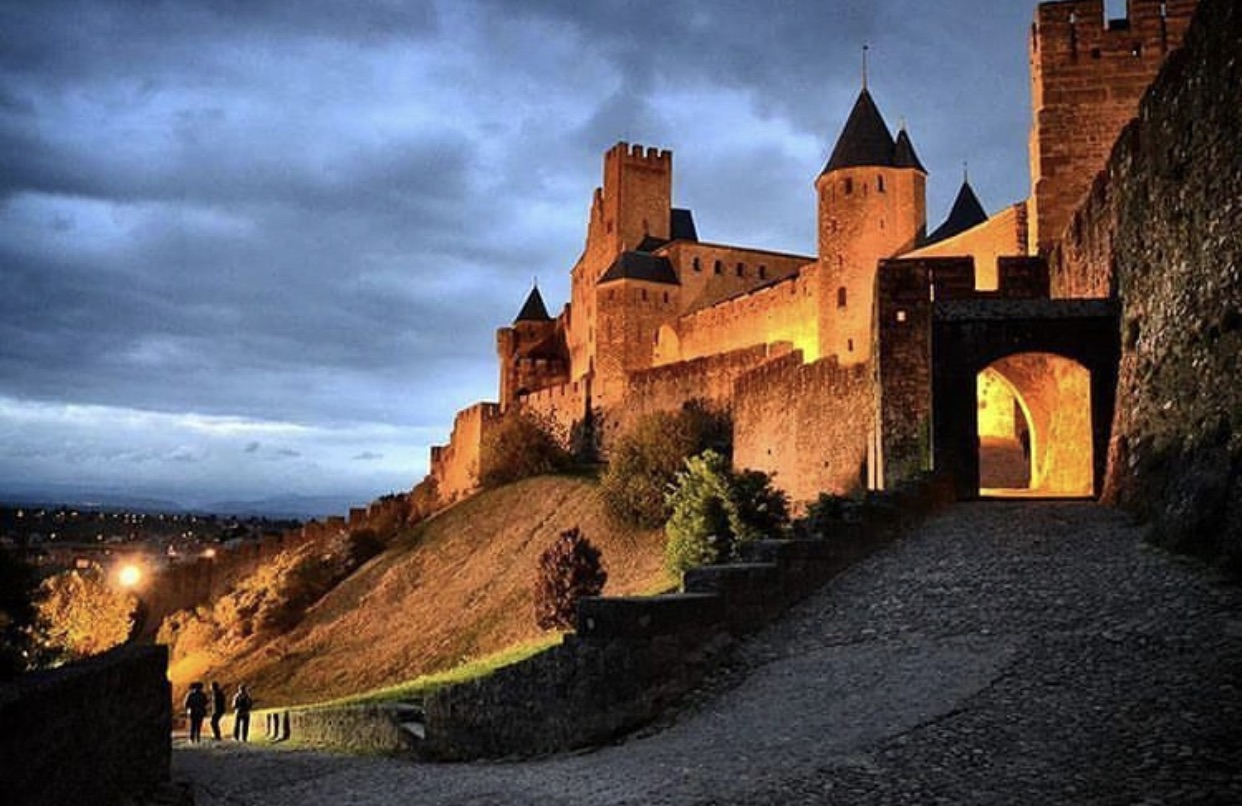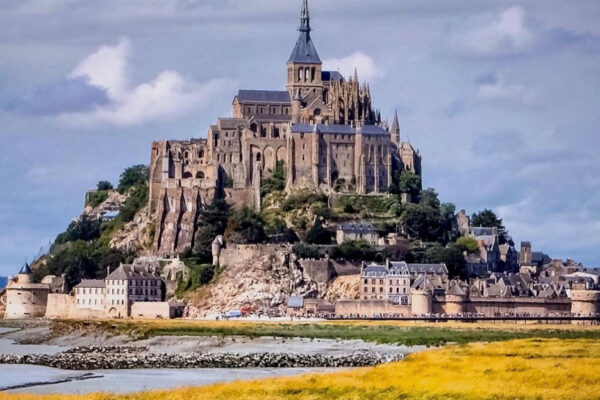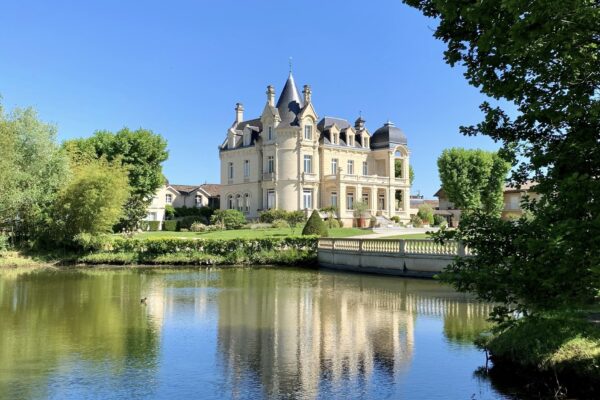Carcassonne…if these Medieval walls could talk
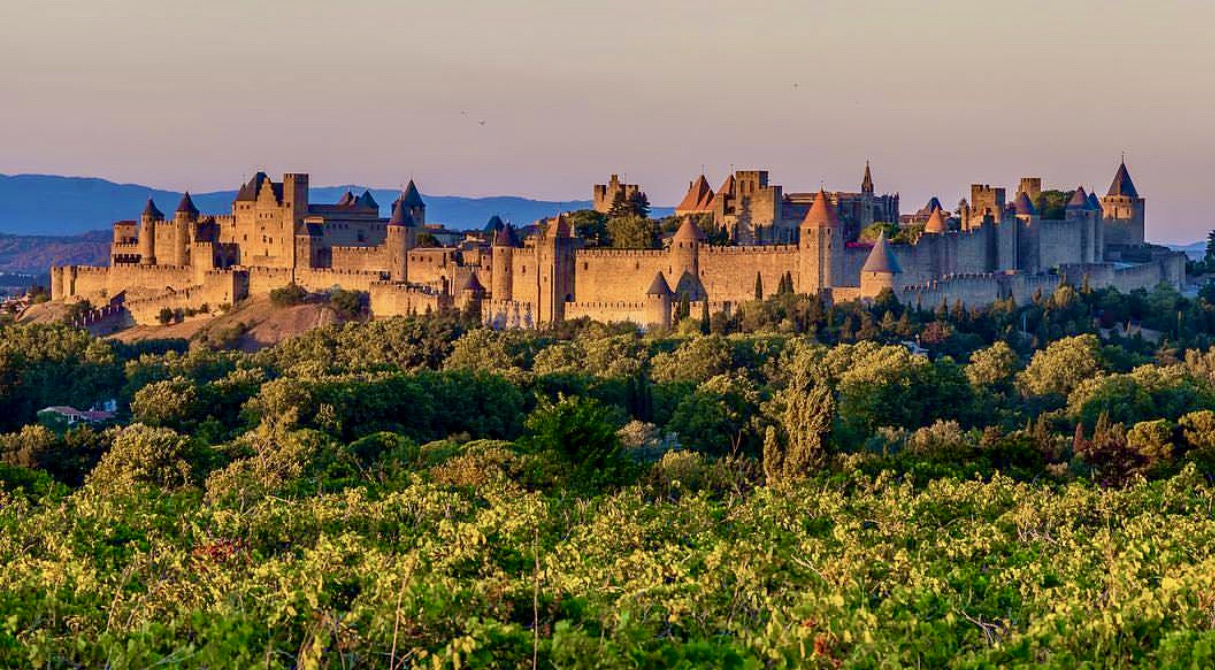
Text and photos, unless otherwise noted, by Marla Norman, TCO Publisher
Driving across France, year after year, we’ve always been impressed with Carcassonne — the medieval fortress in the southern Occitanie region. Visible for miles, this spectacular walled city seems like an illusion or movie set floating on top of a hill. You almost expect to see a battalion of Crusaders in full armor galloping off to battle.
On one of these cross-country trips, we finally decided to stop and explore the city. Coincidentally, the weekend we chose was October 31, the evening before All Saints’ Day, a national holiday in France. Back in the States, of course, the date is a semi-national holiday called Halloween, the name originating from “All-Hallows Eve” the night prior to the holy day.
We booked a room at Hôtel du Château, just outside the city walls — a fortuitous choice as it turned out. Views from the hotel terrace are extraordinary! And sitting with a cocktail, watching the sun set behind the ancient walls and castle turrets is one of our fondest memories from the entire visit. Additionally, the grounds are lovely; the rooms are quite large and beautifully furnished.
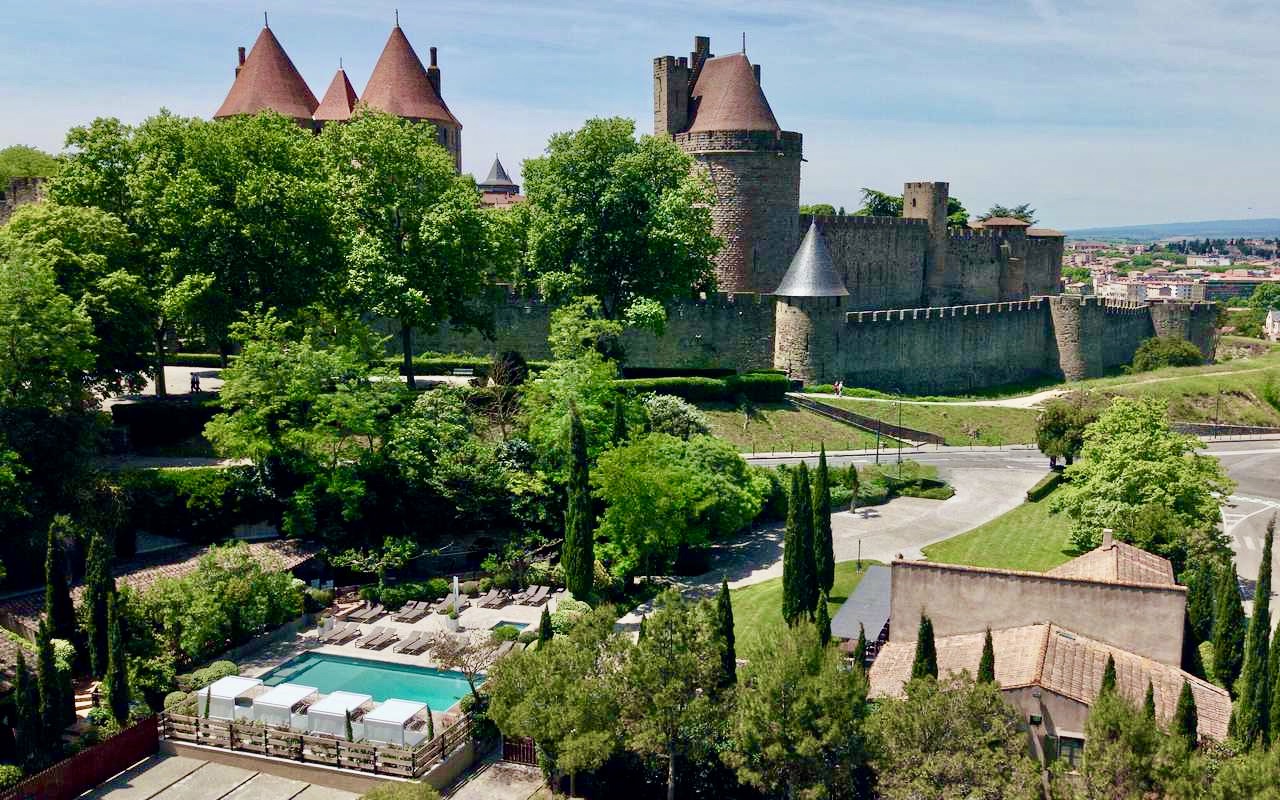
Hôtel du Château, is located just outside the walled city, with spectacular views of the fortifications. Photo courtesy of Hôtel du Château.
Also within walking distance to the Hôtel du Château is Maison du Cassoulet . Here, the house specialty is, obviously, the celebrated regional stew — Cassoulet, a savory concoction of meat, pork and white beans. We enjoyed every hearty, succulent bite, served in the traditional earthenware pots along with homemade bread and local wine.
INSIDE THE WALLS
Although the hilltop site was first inhabited around 3,500 BC, the actual medieval fortress originally dates back to the Gallo-Roman period, around 100 BC. Visigoths seized the city next, followed by a dizzying array of conquerors until the region officially became a part of France in 1247.
The name “Carsac” is Celtic. But the folkloric version of the city’s name is much more compelling. Supposedly, when Charlemagne laid siege to the early settlement in the 9th century, a resourceful woman — Madame Carcas — boldly fed the last of the city’s wheat to a pig in full view of the legendary ruler. Presuming that this indicated endless food supplies, and therefore an endless siege, Charlemagne retreated and the happy townsfolk named their city after the quick-thinking Mrs Carcas. A statue to this mythical lady was erected and remains a popular site still today.
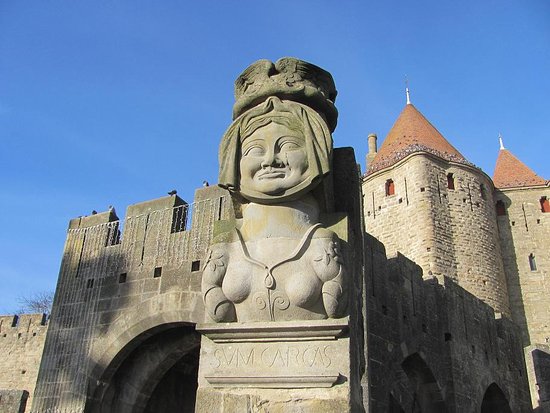
Statue of the legendary Madame Carcas who chased off Charlemagne.
Later, in the 13th century, Louis IX (Saint-Louis) enlarged the town and his son Philippe III fortified the ramparts. Already considered impregnable, Carcassonne became even more renowned during the Hundred Years’ War when the English, led by Edward the Black Prince, failed to take the city in 1355.
But sadly, as the decades went by, Carcassonne became less strategic and the city fell into such a state of disrepair that the French government decided to demolish it. Fortunately public outcry stopped the destruction. Architect Eugène Viollet-le-Duc, famed for restoration projects that included Notre-Dame de Paris, Mont Saint-Michel and Sainte-Chapelle was employed to rebuild the walled city.
Some historians criticize the site, saying Carcassonne became more a reflection of Viollet-le-Duc’s artistic imagination than an accurate reconstruction of the ancient medieval fortress. Regardless, La Cité de Carcassonne is listed as a UNESCO World Heritage site and one of France’s most popular destinations.
TOP ATTRACTIONS
The Narbonne Gate leads into the heart of the old medieval city. Here too are paths to the ramparts, with magnificent scenic views of the surrounding countryside. Château Comtal, the massive 12th century castle within the city walls has a working drawbridge and museum — Musée Lapidaire, with medieval stone sculptures.
The Basilique des Saints Nazaire et Celse (Basilica of Saints Nazarius & Celsus) is a national monument, constructed in the Gothic-Romanesque architectural styles. The original church at the same site most likely dates to the 6th century, although no trace of it remains.
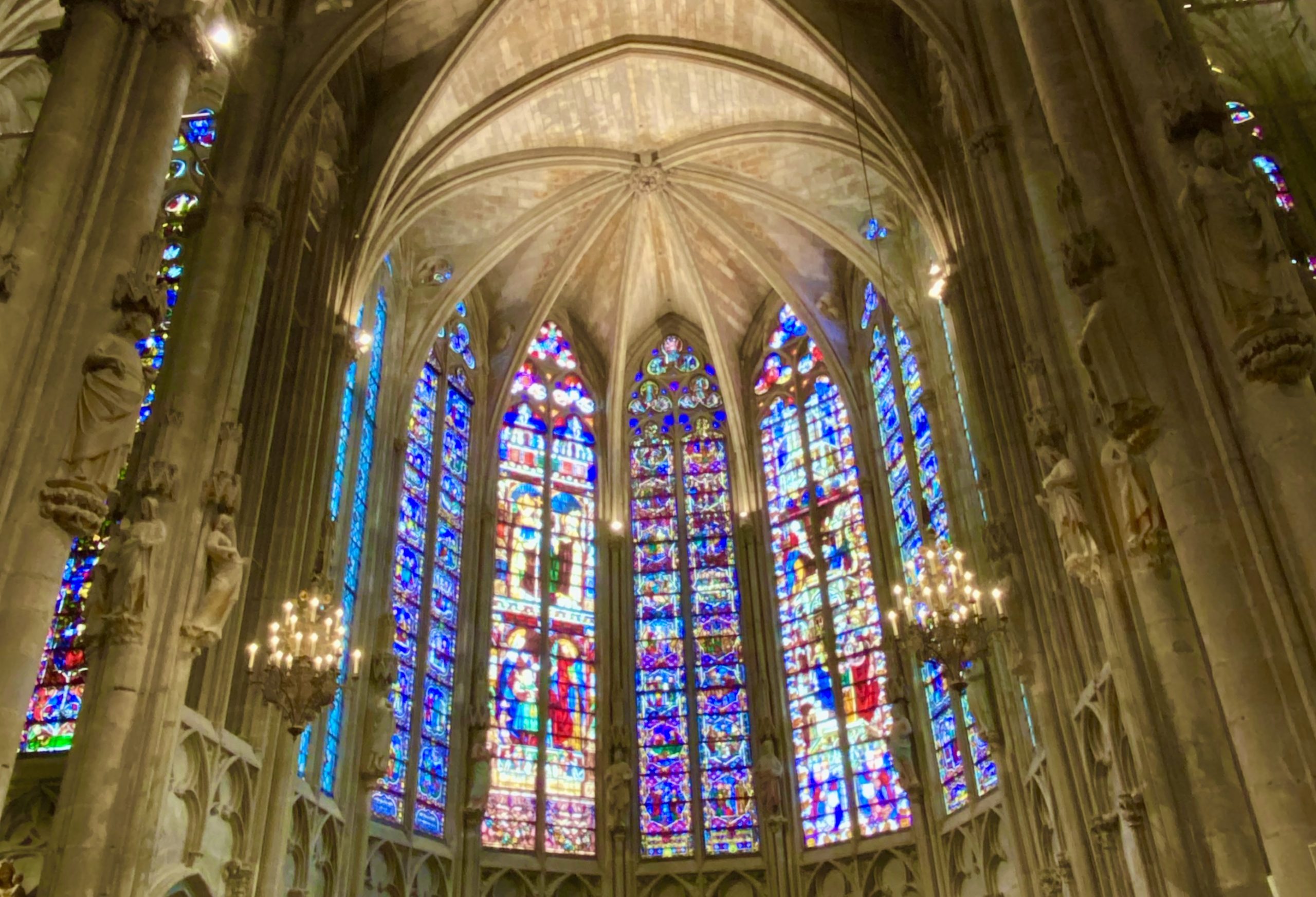
Stained glass windows at Basilique des Saints Nazaire et Celse are some of the oldest in France.
In 1096, Pope Urban II visited the site and blessed the building materials for the construction of a new church. This cathedral was built between the 12th century and the late 13th century. The central stained glass window is one of the oldest in France, dating back to 1280.
Aside from the brilliant stained glass windows and sculptures, you can view the Siege Stone inside the church — a 13th century relief that most likely illustrates a scene from the Albigensian Crusade.
As we tour the city, holiday crowds build throughout the day. We escape the tourists for a quick lunch break just outside the walls at Bloc G. Ultra modern, this restaurant-hotel is a vivid contrast to the medieval city and the food is consistent with the decor. Updated versions of French cuisine with an Asian accent are served with good regional wines, all at excellent prices.
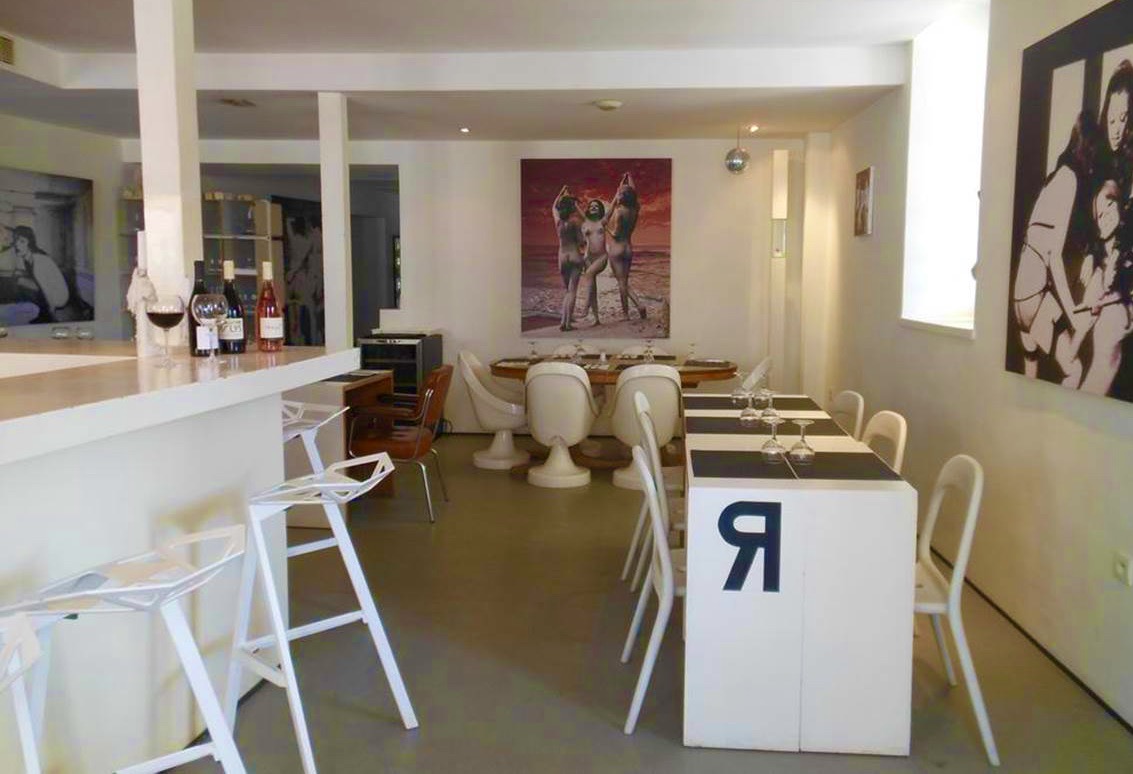
Ultra modern Bloc G serves Asian-influenced French food. Photo courtesy of Bloc G.
At the end of our wander, we returned to our Hôtel du Château. Finding a table on the terrace, we watched the grand evening light show unfold. There were no trick-or-treaters that Halloween, but as the night wore on, we could swear we saw several knights, sitting astride white horses, exiting the castle gates and galloping off in the distance….
Our overactive imaginations, no doubt. But then again, what ghost wouldn’t want to haunt Carcassonne?
